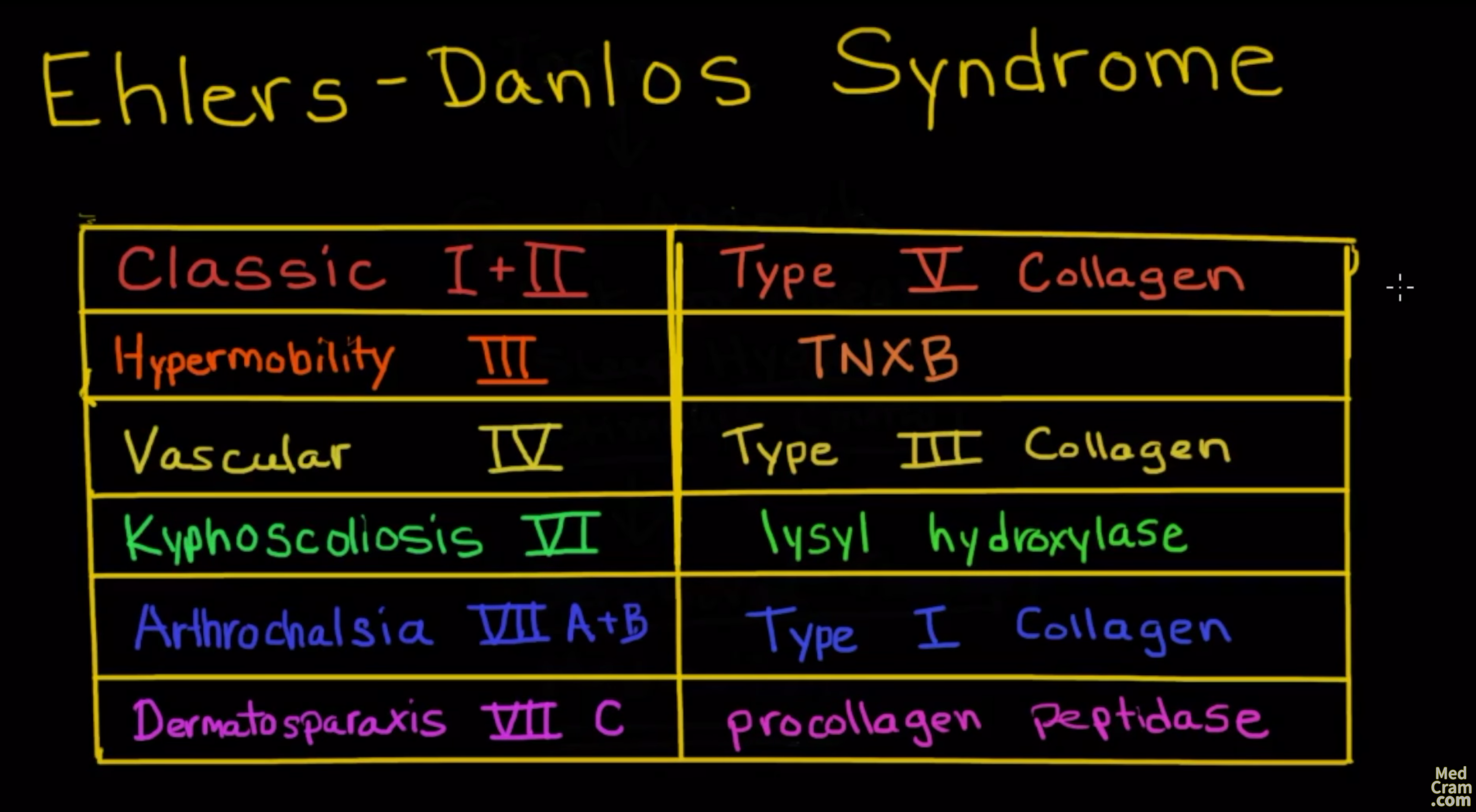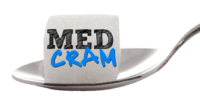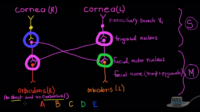Are you starting to prepare for your USMLE Step 1 or COMLEX Level 1 Exam? If so, you may have come across questions about Ehlers Danlos Syndrome. Lucky for you, we’ve partnered with MedCram to bring you this video demonstration of a tricky question covering just that.
The Question:
A 6-year-old boy is brought to the emergency department after dislocating his right shoulder at school. An x-ray of the shoulder confirms an anterior dislocation. This is his third dislocation in the previous 3 years. Physical examination shows hyperelasticity of the skin and hyperextensibility of the joints. Which of the following collagen mutations is most likely responsible for this patient’s condition?
A. Type I
B. Type II
C. Type III
D. Type IV
E. Type V (Correct)
Main learning point: Ehlers-Danlos syndrome is a disorder with eleven identified variants. The most common types, I and II, are the result of a mutation of type V collagen. EDS is characterized by hyperextensibility, joint hypermobility, multiple joint dislocations, poor wound healing and tissue fragility.
Correct answer: (E) Type V.
Explanation: This patient most likely has Ehlers-Danlos syndrome (EDS) secondary to abnormal type V collagen. EDS is a rare genetic connective tissue disorder that presents with hyperextensibility, joint hypermobility, multiple joint dislocations, poor wound healing, and tissue fragility. Type V collagen in primarily found on cell surfaces, most interstitial tissues, and in hair and placental tissue. The skin of patients with Ehlers-Danlos syndrome is highly extensible, and joint dislocations are common.
(A) Type I collagen is the most common type of collagen and is found in the bones, skin, fascia, sclerae, tendons, and cornea.
(B) Type II collagen is primarily found in hyaline cartilage and the vitreous humor of the eye.
(C) Type III collagen is primarily found in the skin, blood vessels, uterus, fetal tissue, and granulation tissue.
(D) Type IV collagen is primarily found in the basement membrane, basal lamina, and the lens of the eye.
Reference: First Aid 2014, p81 2. UpToDate, Post TW (Ed), UpToDate, Waltham, MA. (Accessed on July 13, 2014.)
Looking for more practice? BoardVitals offers question banks to prepare you for your USMLE Step 1 or COMLEX Level 1 exams. Not ready to commit? Start with a free trial: USMLE Step 1 or COMLEX Level 1.




